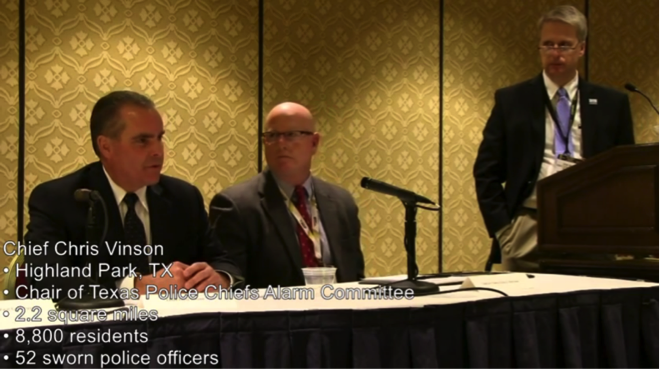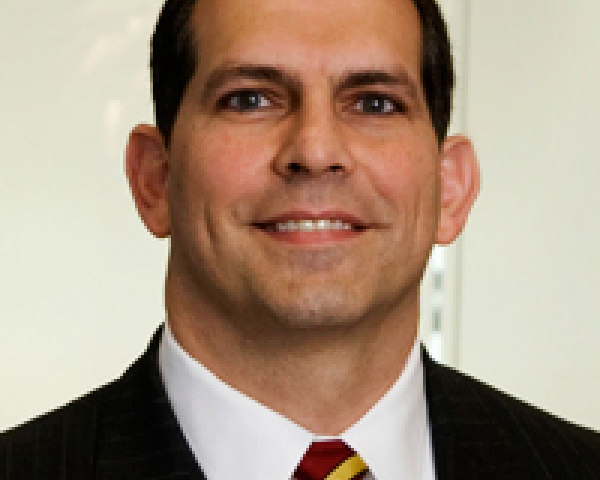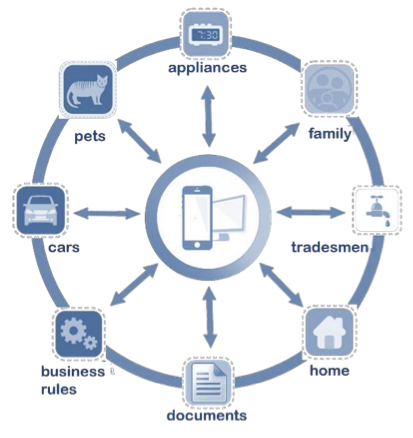PwC U.S. risk and capital management leader Henry Essert and PwC global insurance regulatory director Ed Barron recently sat down to discuss the proposed International Capital Standards (ICS) for insurers. They addressed at length what the ICS is and what it could mean to insurers. Here are their thoughts on the standard, as well as some background information on capital management and related issues in the insurance industry.
1. Why have an ICS?
The ICS is about creating a consistent capital measure across globally active insurers and is being promoted as a solution for group-wide supervisors to better manage capital allocation around an international business.
Insurers generally have developed their own capital standards, and what they have developed applies globally across groups. However, regulators need a capital measure to oversee insurers, and most of the regulatory measures are at the legal-entity level. During the last financial crisis, problems arose when parts of a troubled financial institution fell through a regulatory crack.
Even before that, many insurance regulators were concerned that they did not have a good picture of companies as a whole because capital is measured differently in different jurisdictions. This makes it hard for a supervisory college to identify where there may be shortfalls in capital.
2. Who wants it?
Primarily regulators and, by extension, policymakers and politicians/elected representatives. At the end of the 2008 crisis, many of them were concerned about avoiding or better handling any subsequent crises. This prompted politicians (via the Financial Stability Board) to direct regulators to improve the regulatory system for all of financial services, particularly as it relates to capital standards. And, while the banking industry has received the most attention, the insurance industry is part of a wider move for change in financial services; in fact, the FSB is now firmly focusing on the sector.
However, many elected officials in the U.S. are now concerned about adopting a "foreign" calculation that differs from what regulators in their jurisdiction have used. To run their business and generate a good return on capital, multinational and other groups need to have some way to measure how much capital they need in total on a consistent basis. They have devised their own ways of doing this calculation using a combination of current regulatory calculations and their own capital models (which are sometimes called economic capital models). They tend to do these calculations on their own without outside prompting and have concerns that the ICS calculation could conflict with what they are already doing. There has been extensive regulatory change in recent years, and the ICS is yet another initiative that insurers have to address – and in a very aggressive timeframe.
3. Does it reflect current practices or does it break from them?
Practices differ by country, so there is no single current practice standard to compare with, and the ICS is intended to be a truly global group measure. The current ICS proposal is not the same as any practice in any jurisdiction currently, but most people would say it is closer to European Solvency II approach than to the current U.S. practice. Accordingly, ICS (as it currently stands) would be a considerable change to the U.S. market. This is why the Federal Insurance Office (FIO) is leading a workstream on setting up a GAAP+ concept that will be more closely aligned to U.S. practice.
4. Who’s going to enforce compliance?
The International Association of Insurance Supervisors (IAIS) does not have any executive powers; its role is strictly to develop regulatory guidelines and best practices for national supervisors to adopt, either in whole or part. Application of the ICS is up to individual supervisors, and the question remains if they will act in many major jurisdictions. In theory, the ICS will apply (via ComFrame) to only internationally active insurance groups (IAIGs), of which there are roughly 50 worldwide. However, many observers expect that when the ICS becomes an industry standard, other companies also will use it to calculate and report their capital adequacy.
Several jurisdictions do not have an IAIG. Therefore, we assume they would not be pressured into introducing an ICS concept. However, because most jurisdictions readily adopt many IAIS principles, we would not be surprised to see some of the principles within ComFrame and the ICS “trickle down” to smaller markets, especially where there is not necessarily global activity but a high concentration of regional activity (e.g., Asia).
The reason countries tend to adopt IAIS guidelines is because, when the IMF/World Bank conducts its Financial Sector Assessment Program (FSAP) reviews, it uses IAIS principles as the benchmark for assessing the insurance sector. Therefore, it is in many people's interest to adopt IAIS standards to achieve strong FSAP results (which feed into sovereign rating, etc.).
5. Who at insurers will be most affected?
If the calculation is similar to others already in use, then primarily risk, actuarial, financial and compliance will be affected. If, on the other hand, the calculation is very different, then just about all functional areas could be affected because of a knock-on effect on product portfolio, pricing, investment strategy and so on. In either case, boards will need to demonstrate they understand the numbers and what they mean, particularly as they relate to
strategic decisions.
Taking a look at the bigger picture, the ICS is only part of a larger regulatory package for IAIGs called Comframe. Other aspects of Comframe, like governance, risk management policies and Own Risk and Solvency Assessment (ORSA) also will have an effect on many areas, regardless of where the ICS ends up.
6. How much investment/effort would implementation and compliance require?
This depends on the nature of both the calculation that is adopted and its enforcement. It is almost certain that the calculation will be complex. But, if the calculation is similar to what groups are already using, either because it is similar to the main regulatory calculation groups use or is similar to their own internal, economic capital calculation, then the investment/effort will be less significant.
More importantly, if it winds up being similar to current calculations, then the new ICS would not have a major impact on how the company's business profitability is measured. However, if the calculation is different, implementation/compliance and business impact will be significant.
Investment and effort may not necessarily be limited to basic compliance. Insurers can look to their experience with Solvency II, which entailed more than just change to capital standards, and required significant investment in new technology, as well as potential changes to organizational structures.
7. Will product offerings change? Are there certain products that may disappear?
If calculations are different than those now in use, then, yes, there would likely be impacts on premiums for some products, and some may even become nonviable. Many life companies are concerned that if certain types of calculations (notably, market-consistent calculations) are used, then long-term savings products may be too costly to remain viable. At the least, if certain products do not disappear, then their design may need to change (which would change the balance of insurers’ product portfolios).
8. What’s been the reaction of ratings agencies and analysts?
Ratings agencies typically have their own capital calculation formula and, for the most part, at the group level. It is not clear if they will replace their own with ICS but could do so if they think the latter is a comparable or better formula.
Equity analysts typically are concerned with the ability to pay dividends or buy back stock, which happens at the parent company level. Accordingly, they typically do their analysis at the group level. They have not been a vocal part of this discussion but probably would find an ICS helpful.
In fact, most stakeholders are likely to support the concept of a global capital standard for the insurance industry, but there almost certainly will be differences of opinion about what one should look like as details are hashed out about how the standard will actually work.
9. With all this in mind, is a true ICS likely?
It’s too early to say for certain one way or the other, but even the regulators who question the necessity of an ICS seem reconciled to the notion that one should be developed. The debate now is what the one true ICS should look like, and how the calculation should be done is the main area of disagreement between and among geographies. For other aspects of the Comframe regulatory package, like governance, risk management policies and ORSA, there is significantly less disagreement.
10. What should insurers be doing now?
Building the ICS calculation formula and finalizing the rest of Comframe probably will take several years. The following are likely to be key steps in the journey:
- In the early stages, companies will want to understand how the different, proposed ICS options may affect them, to determine which option they favor.
- As regulators further develop the different options' details, they will want to study how different factors in the proposed formulas will affect companies. They will ask insurers to conduct studies of these different factors for their business (i.e., field testing).
- Once the nature of the ICS becomes clear, companies will need to implement the formula (and eventually, the rest of Comframe).
- All stakeholders should remain aware of ICS developments to assess where there is consensus and disagreement. If there continues to be significant divergence in how required capital is calculated across regimes, and if ICS adds complexity rather than reducing it, then most insurers will need to factor these developments into how they are modernizing or plan to modernize their risk, actuarial, financial and technology platforms to operate effectively and efficiently in the new environment.
- Insurers may need to redesign and reprice their products, as well as potentially rethink their business strategies. It is possible that they will need to divest certain businesses and add others.
What are current capitalization requirements?
Current capital requirements in the U.S. are set at a legal-entity level. There are no global requirements for a company that operates in more than one country, and calculation formulas for capital requirements typically vary in each jurisdiction. Solvency II gets close to mandating a group standard. However, it uses the concept of “equivalence” to deal with differing capital regimes between the EU and the rest of the world, rather than enforcing Solvency II capital standards on a third country. In other words, if a country outside of the EU is deemed equivalent, then the group headquartered in the EU can use the capital standard of the operation outside the EU within its group calculation on the grounds that EU regulators are comfortable with the system in that
third country.
Are those requirements adequate if there’s another market shock like 2008 or a series of catastrophic events?
During the 2008 shock, some significant companies did not have enough capital, and governments intervened. In many cases, the formulas that set the capital requirements that proved insufficient are still in use.
However, that doesn’t necessarily mean current requirements would be inadequate for future shocks. There’d need to be a model to test if current requirements are adequate for a defined market shock like 2008, but we would need to define exactly what "a series of catastrophic events" means before modeling its impact.
What results in undercapitalization?
The more risky the business, the theory is that insurers will need to hold more regulatory capital against the risk. To be undercapitalized is normally a reflection of poor reserving or liquidity management.
More specifically, companies hold assets to defease their liabilities, which are calculated based on a more or less average level of claims. Additional assets are set aside (not available to pay shareholder or policyholder dividends) to pay for claims should they be higher than the average. This amount of additional assets is the regulatory required capital. If these assets set aside prove insufficient during a crisis, then undercapitalization results.
What is an adequate level of capital reserves (and, if the level varies by sector, what is the appropriate level for each)?
Figuring out the answer to this question is what the whole ICS global and country level debate is all about.
Which sector (reinsurance, P&C, life) has the biggest challenges remaining adequately capitalized?
There is no perception that this is a bigger issue for one sector compared with another. Problems have occurred in all sectors. Some future crisis events will affect all sectors, like credit risk events; others are more harmful for PC (wind storms) or life (pandemics).
Do different sectors have different standards? In other words, does life have a lower standard than P&C?
No, the same formula is used across the sectors. The formula will cover risks that are common across sectors with the same calculation. Different types of risk are covered by having different factors assigned to different exposures. Some of these will apply only to business/exposures written by life companies or PC companies.
Which are better capitalized, groups or subsidiaries (or does it vary)?
Each subsidiary typically has an amount of actual and required capital it holds on its own balance sheet. The group actual and required capital is the sum of these. Many companies hold actual capital in the subsidiaries just sufficient to cover the regulatory requirement in that subsidiary. They would hold any significant excess at the parent company. So for these types of companies, that would mean the group is better capitalized than the subsidiaries. But that is not always the case.
A group parent company typically can send capital to subsidiaries, subject to meeting its own capital requirements if it is an insurance company. However, the normal capital flow is from subsidiaries to the parent, but the flow is constrained by the subsidiaries' own capital requirements. (Laws differ from country to country about how readily a company can move capital from one entity to another when it has a group capital position.)
Are there certain insurance lines that are difficult to adequately capitalize?
There are certain coverages for which the level of required capital is too high to make premiums affordable. Where this occurs, some form of government intervention typically occurs (e.g., flood insurance in certain areas). This is unlikely to change with or without an ICS.
However, when the objective is policyholder protection, capital is not the only tool. Better risk management is also key, with tools such as the ORSA and governance protocols being paramount. If it is hard to quantify a certain risk type, then strong risk management principles should augment the degree of policyholder protection.

















